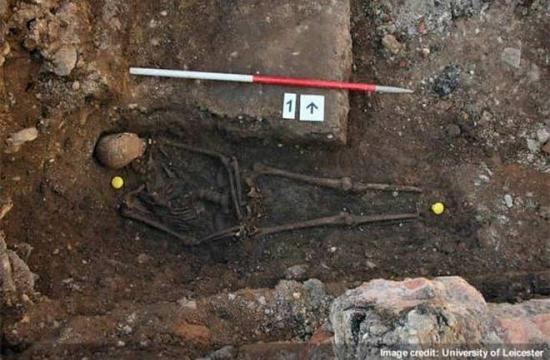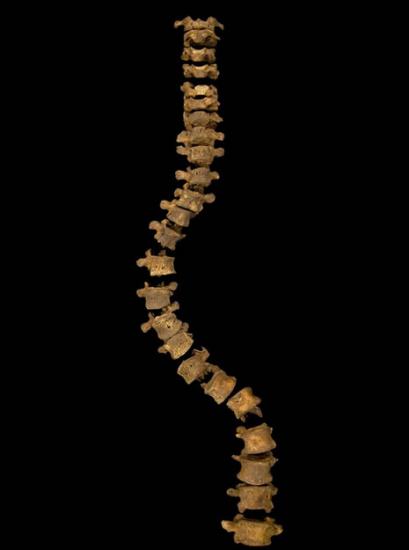Jeanna Bryner
Source - http://news.discovery.com/history/archaeology/richard-iii-scoliosis-treatment-130419.htm

The remains of what may be King Richard III, showing a curved spine and signs of battle trauma. Credit: University of Leicester
King Richard III may not have been a hunchback as portrayed by Shakespeare, but he did suffer from the spine-curving condition scoliosis, and he may have undergone painful medical treatments to straighten it out, scientists report today (April 19).
Archaeologists announced in February that bones excavated from underneath a parking lot in Leicester, England, belonged to the medieval king. Since this confirmation, examination has continued on the bones and historical records, which have suggested the king was a control freak who had a friendly face.
Previous work showed King Richard III likely developed severe scoliosis, a painful condition, in his teen years.

Here the spine of what has been confirmed to belong to King Richard III. The spine shows the king would've had so-called idiopathic adolescent-onset scoliosis, meaning the cause is unclear though the individual would have developed the disorder after age 10; the curvature would've put pressure on the man's heart and lungs and could've caused pain. Credit: University of Leicester
Now, Mary Ann Lund, of the University of Leicester's School of English, has looked into the types of scoliosis treatments available when Richard III was alive, finding one would have been widely available for those who could afford it, such as the nobility.
Even so, there is no evidence on his bones to support the treatment.
"It wouldn't necessarily be possible to distinguish such signs," Lund told LiveScience. "Richard had idiopathic adolescent onset scoliosis, which means that the cause for it is not apparent, and that it developed after the age of about 10. So he would probably have been treated as an adolescent as well as during his adult life."
"It wouldn't necessarily be possible to distinguish such signs," Lund told LiveScience. "Richard had idiopathic adolescent onset scoliosis, which means that the cause for it is not apparent, and that it developed after the age of about 10. So he would probably have been treated as an adolescent as well as during his adult life."
Traction treatment
Richard III was born in was born in 1452 and ruled England from 1483 to 1485, a reign cut short by his death at the Battle of Bosworth Field, the decisive battle in the English civil war known as the War of the Roses.
At the time, scoliosis was generally thought to be caused by an imbalance in the body's humors. "The theory of the humors would mean that this would be geared towards Richard's individual humoral complexion," Lund wrote in an email. "Given the severity of his scoliosis, it's likely that treatment would have involved more than the topical application of ointments."
Some of the short-term scoliosis treatments available during the late medieval period would have been painful, Lund said. For instance, one such treatment, traction, relied on the same principle as the so-called Rack used in torture, she added.
For this treatment, rope would be tied under the patient's armpits and around his legs; these ropes would then be pulled at either end to stretch the person's spine.